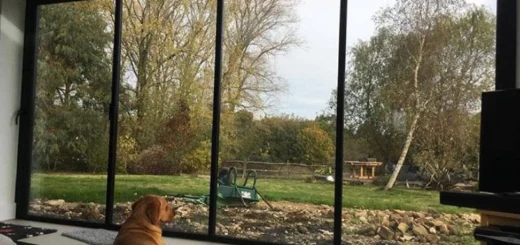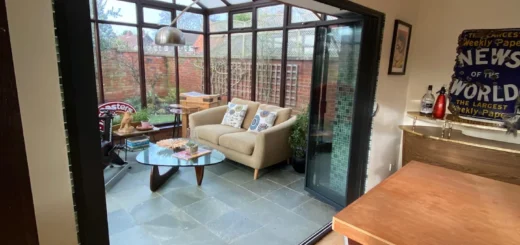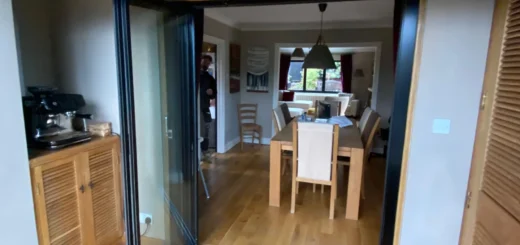Guide to Exterior Glass Doors: Types, Styles & More
Table of Contents
Modern homes rely more than ever on glass. Exterior glass doors have become a common sight in British properties, from period cottages to new-builds. Whether you’re planning to replace old patio doors or add a new entrance to your garden, understanding your options helps you make the right choice for your home and budget.
Why Choose Exterior Glass Doors?
Glass doors do more than just connect your home to the garden. Installing the right external doors can cut your heating costs and make your living space feel twice its size. Modern glass technology has solved many of the problems that used to put people off, from security concerns to heat loss.
Making the Most of British Weather
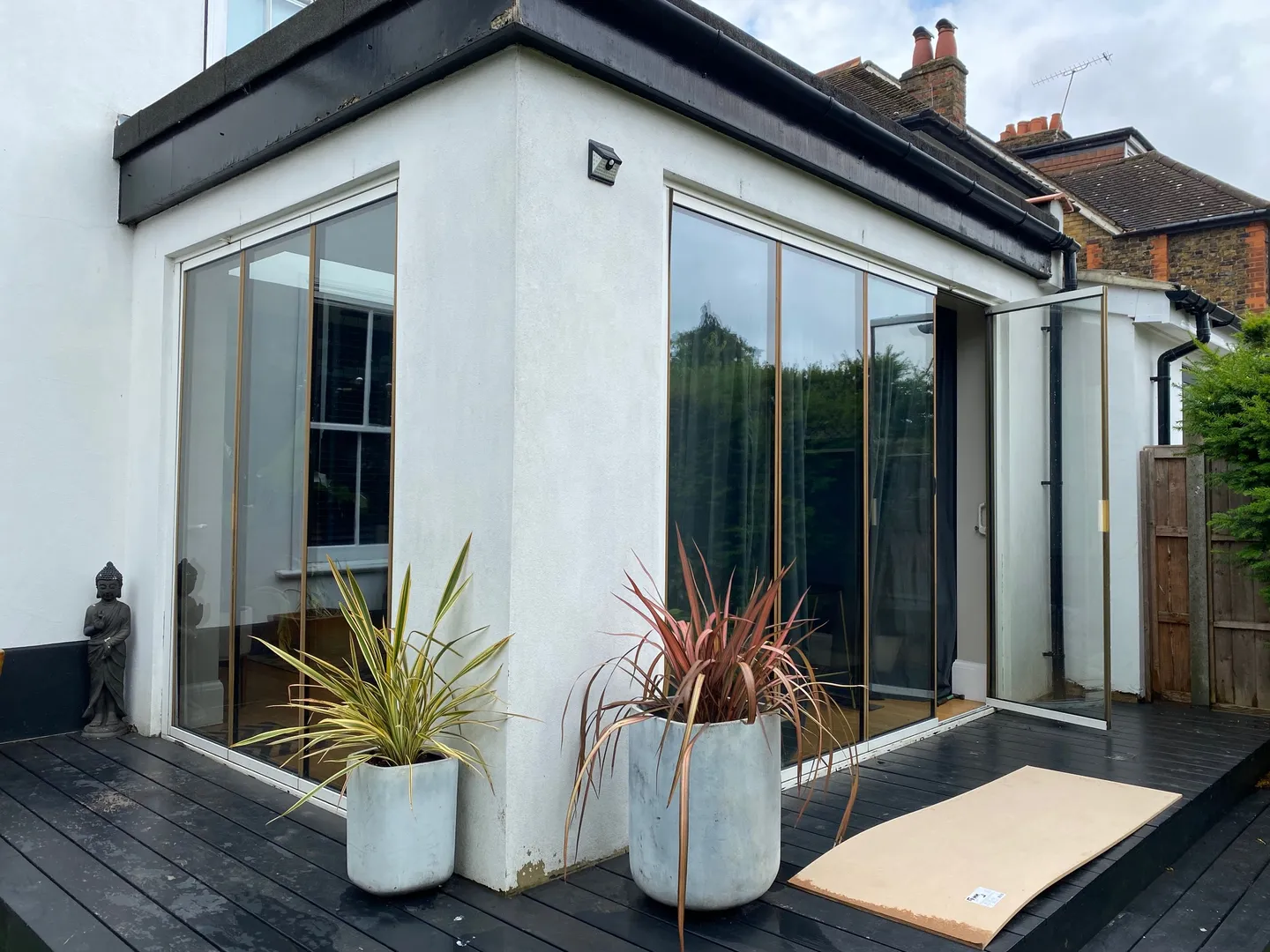
Rain needn’t stop you enjoying your garden view. Today’s exterior doors with glass keep water out even in driving rain, thanks to improved weather sealing and drainage channels built into their frames. Double glazed panels filled with argon gas help maintain steady indoor temperatures year-round, while modern frames prevent the condensation issues that plagued older designs.
Modern external glass doors include carefully engineered details that tackle weather. Locking systems compress seals more tightly than old-style handles, while hidden drainage paths channel away any water that gets past the outer seals. Special thermal barriers inside metal frames stop cold spots forming around the edges.
The Space-saving Advantage
Sliding garden doors need no swing space to open, freeing up room for furniture both inside and out. Even small properties can benefit – a 2-panel sliding system needs just half the wall width clear to open fully. Clever panel arrangements let you position tables, chairs and plant pots right up close to either side.
Beyond the Obvious Benefits
Glass exterior doors can actually make your home quieter. Modern double glazing cuts traffic noise greatly, while the tight seals around door panels block draughts that let sound slip through. You’ll also have more control over ventilation – partial opening positions let you adjust airflow precisely without letting in too much cold air.
Sliding Exterior Glass Doors
Modern sliding patio doors work differently from their stiff, hard-to-move predecessors. New roller designs carry even large glass panels smoothly along their tracks, while improved seals keep the British weather firmly outside. The basic principle remains simple – glass panels slide sideways on concealed rollers – but clever engineering makes today’s exterior glass doors easier to use and more reliable.
How Modern Sliding Systems Work
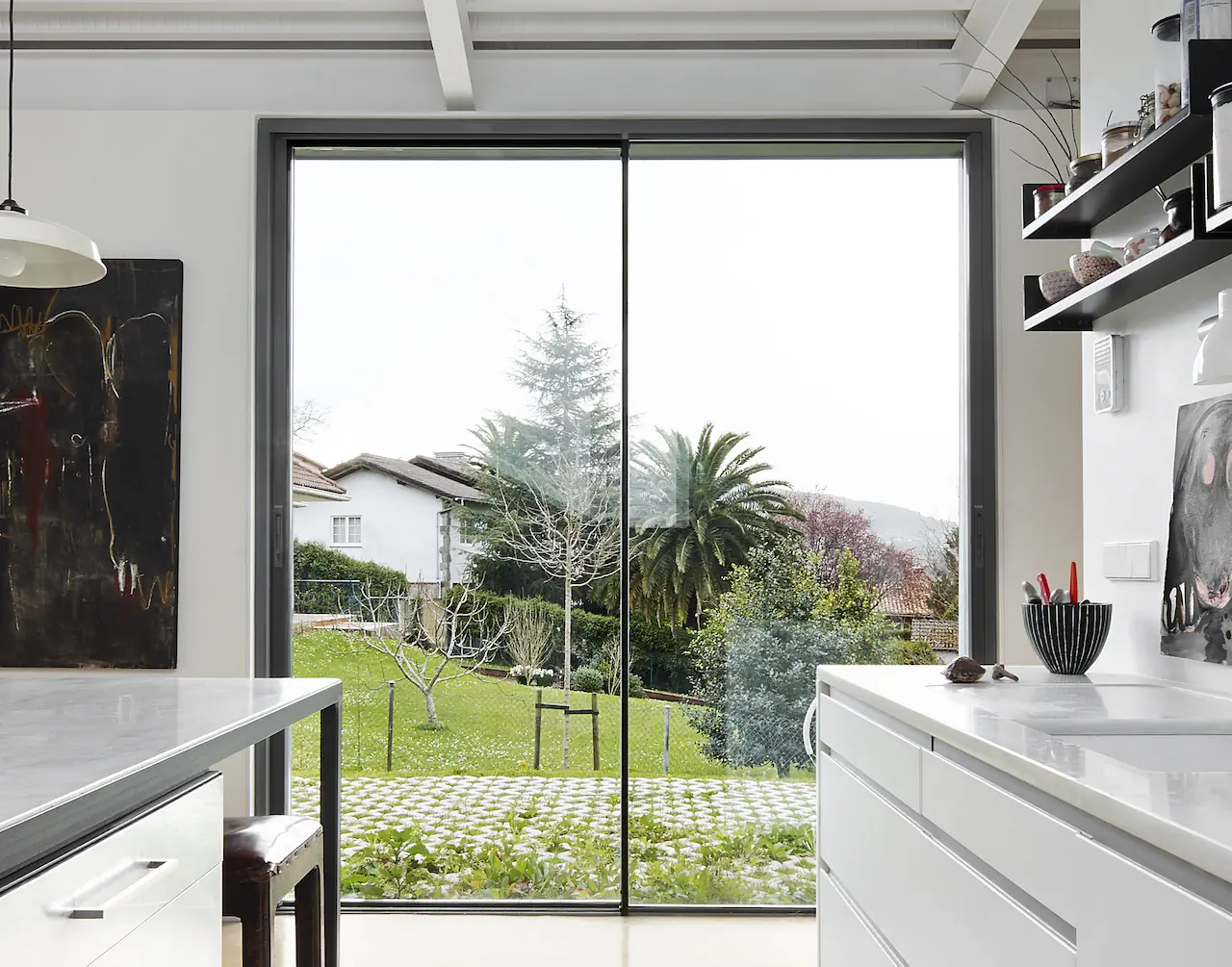
Rollers, often made from stainless steel, carry each glass panel’s weight, running along tracks machined from tough aluminium alloy. External patio doors use multiple rollers per panel, spreading the load evenly to prevent sticking. Brushes sweep the tracks clean as the doors move, while hidden drain holes stop water build up.
The heart of any sliding door is its roller system. Modern designs use large-diameter wheels with sealed bearings that need no maintenance. The rollers connect to the door panels through adjustable mounts, letting installers fine-tune how each panel sits in its frame. Interlocking weather seals between panels create a multi-layer barrier against wind and rain.
Perfect Places for Sliding Doors
South-facing walls benefit most from sliding glass external doors, giving you clear views of the garden while catching winter sun. Wide openings suit sliding systems particularly well – the panels stack neatly behind each other when open, unlike hinged doors that need space to swing. Rooms that open onto patios or decking work brilliantly with sliding glass doors, creating a flush threshold you can step straight across.
Current Design Trends
Dark grey frames have taken over from white as the most popular choice for sliding systems. Slender frames with more glass and less visible metal appeal to homeowners wanting a more striking look. Some manufacturers now offer different colours inside and out – perhaps white inside to match your internal trim, with anthracite grey outside to match your windows.
Bifolding Exterior Glass Doors
Today’s glass bifold doors (also known as glass concertina doors) combine clever engineering with subtle design touches. Each glass panel connects to its neighbours through strong hinges, letting them fold like a concertina while gliding along a sturdy track. Many homeowners look for exterior glass doors that open fully rather than partially. Unlike sliding systems that always keep at least one panel fixed in place, bifolds can create openings across almost the entire wall width.
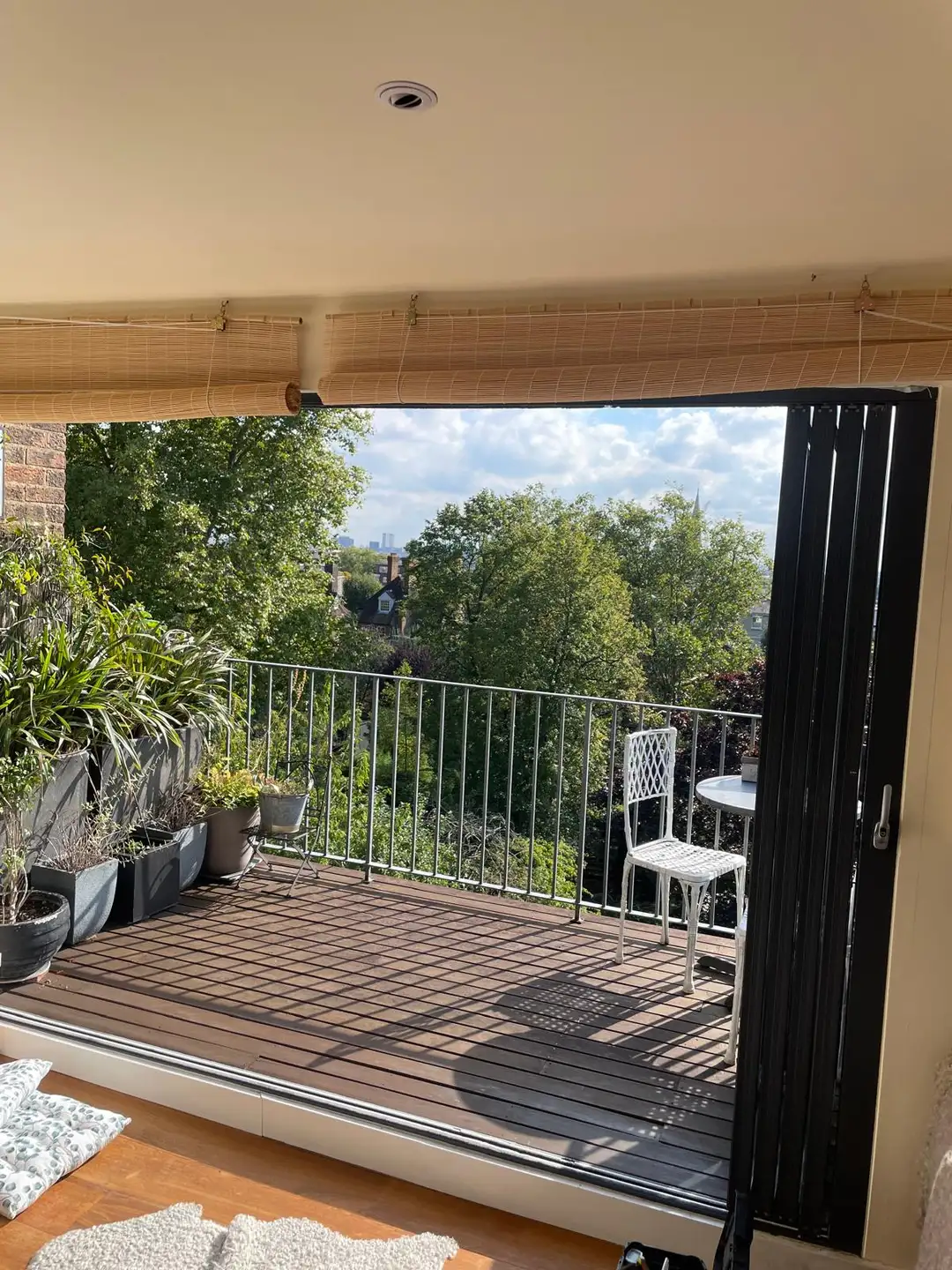
How Bifolds Work
Bi-fold doors run on a track system that guides both the top and bottom of each panel. Small wheels at the bottom carry the weight, while the top track keeps panels properly aligned as they move. The latest bifold door systems use magnetic catches to hold panels neatly in their folded position, with no hooks or clips that can break or rust. Modern exterior doors with glass include built-in stops that control how far each panel can swing.
Unlike older designs, modern bifold glass external doors prevent gaps appearing between sections. Hidden guides between panels ensure smooth movement throughout their range. These features make today’s exterior glass doors more stable in windy conditions.
Best Uses for Bifolds
Wide openings onto level gardens or patios suit bifold patio doors particularly well. The panels stack neatly at one or both ends when fully open, though you’ll need clear space for them to fold back against the wall. Rooms wider than 4 metres often work better with bi folding external doors than with sliding systems. Exterior glass doors of the bifold type let you fold all panels completely out of the way.
Spring and summer see these doors at their best – push them right back and your living space doubles in size. Even in cooler months, they let you watch the changing seasons while staying warm inside. Glass exterior doors help you feel connected to your garden year-round. Modern designs keep heat in during winter and let cool breezes through in summer.
Choosing Stack Positions
Your bifold doors can stack to the left, right, or split to both sides. Traffic doors – panels that open like normal doors without moving the whole set – work well at either end. Some homeowners prefer all panels stacking to the outside, while others choose internal stacking to protect the folded doors from strong winds. New bifold exterior glass doors offer these flexible configuration options as standard.
The number of panels affects how they’ll stack. Three panels might fold to one side, while five or more often split to both ends. Glass panels typically measure between 750mm and 1000mm wide. Bifold exterior glass doors let you calculate your ideal configuration by dividing your opening width by your chosen panel size.
Slide and Turn Exterior Glass Doors
Many British homeowners haven’t heard of slide and turn systems yet. These clever exterior glass doors combine the best aspects of sliding and bifold designs, while solving some common problems. Each panel slides along the track independently, then pivots to stack at 90 degrees to the frame. Glass exterior doors of this type work particularly well where you want the panels to stack outside the opening.
How Slide and Turn Works
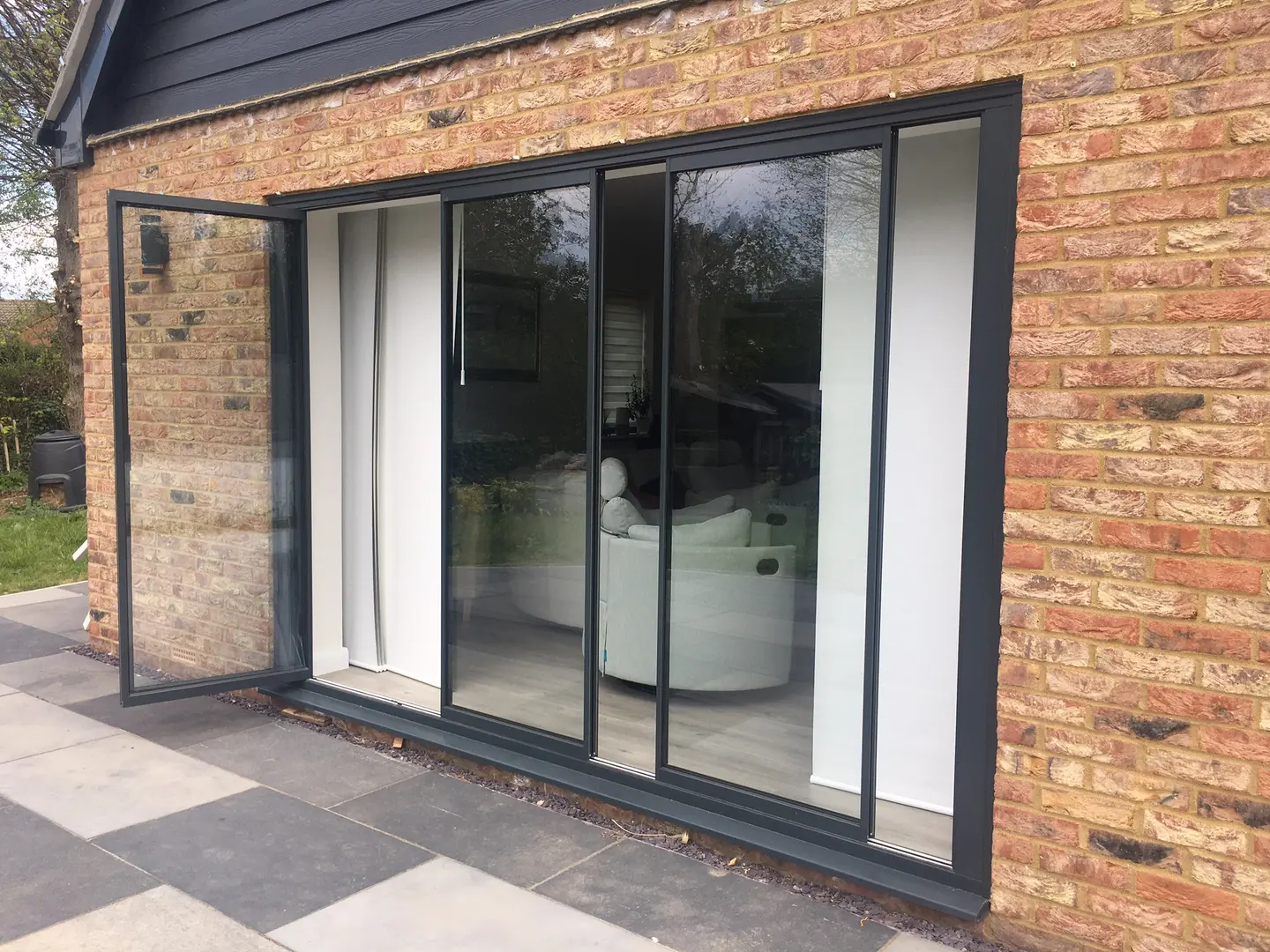
Every panel moves on its own, unlike bifolds that pull their neighbours along. You slide each section separately until it reaches its turning point, then pivot it to park against the wall. Exterior doors with glass in this style need no hinges between panels, reducing the visible hardware and making each section lighter to move.
The panels typically run on discrete carrier units hidden in the top track, with small guide pins at the bottom instead of wheels. This design keeps the threshold low and prevents the sticking issues that can affect bottom-rolling systems. The turning mechanism includes clever safety features that stop panels swinging until they reach the right spot.
Slide and turn exterior glass doors stay cleaner than bifolds because the panels don’t fold against each other. Dirt and water can’t get trapped between sections, and there’s no risk of the panels marking each other when stacked.
When to Choose Slide and Turn
Narrow terraces and balconies often suit these doors best. The panels stack at right angles to the track, taking up less space than bifold doors that fold back parallel to the wall. Each panel of these exterior glass doors moves individually, making them easier to handle in tight spots.
Properties with side access restrictions benefit from slide and turn systems. While bifolds need clear space along the whole wall for their panels to fold, slide and turn glass exterior doors only need room at one end. You can even partially open these doors in bad weather, sliding just one or two panels to create a sheltered entrance – similarly to French doors.
The ability to move each panel separately proves useful – you might slide one panel for ventilation, move several for easy access to the garden, or open the whole set to enjoy summer evenings. Each section of these exterior doors with glass operates independently, giving you more control than all-or-nothing bifold systems.
Design Options for Period and Modern Homes
Period properties need exterior glass doors that match their character, while modern homes often suit simpler designs. Heritage sliding doors recreate traditional Victorian or Georgian styling using modern materials and security features. Glass exterior doors now come in such varied styles that they can improve any property’s curb appeal.
Period Property Solutions
Traditional homes often benefit from designs that include Georgian bars or leaded glass patterns. These exterior doors with glass can incorporate authentic-looking glazing bars without compromising thermal performance. Glass exterior doors for older properties typically feature deeper frames and more decorative mouldings than their contemporary counterparts.
The bars sit between the glass panes rather than on the surface, making cleaning easier while maintaining the period look. Natural light still floods in despite the divided panes, as modern glass is clearer than old varieties. Exterior doors with glass can even replicate the putty-lines of original Victorian designs using specially shaped aluminium sections.
Frame Choices and Finishes
Modern aluminium patio doors offer more colour options than ever before. Standard powder-coated finishes resist fading and scratching, while textured coatings mimic the look of painted wood. Glass exterior doors nowadays often come in over 150 RAL colours, letting you match existing windows or create striking contrasts.
Glass Options
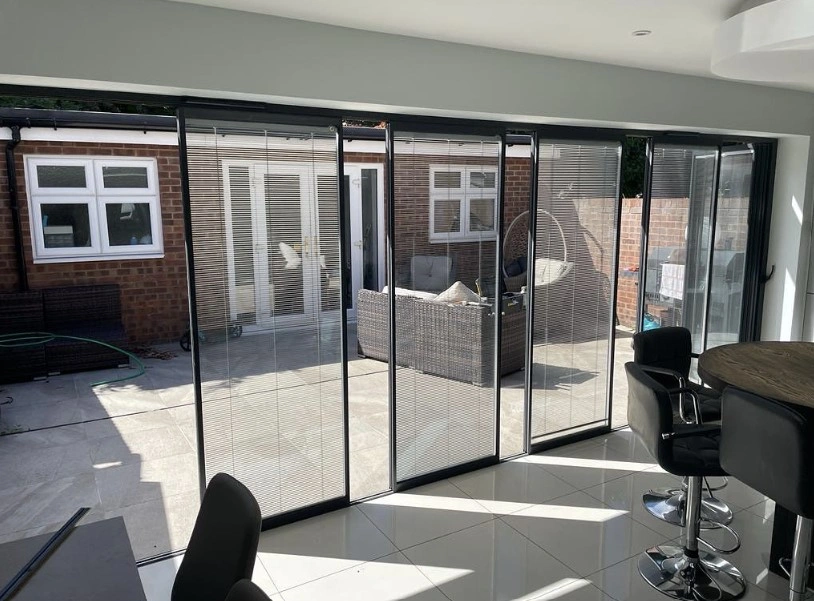
Every panel uses toughened safety glass as standard, with options for extra privacy or solar control. Exterior glass doors can include sandblasted patterns, etched designs, or subtle tints. Some sections might use opaque glass to hide clutter while still letting light through.
Built-in blinds sit between the glass panes, protected from dust and damage. These glass exterior doors stay clean and neat while offering complete privacy when needed. The blinds raise, lower and tilt using magnetic controls on the frame, with no cords to tangle or break.
Flush threshold patio doors make access easier for everyone. The low floor track sits almost level with your indoor and outdoor flooring, removing trip hazards while still keeping water out. Exterior doors with glass can now achieve this low threshold without compromising weather protection.
Making Sustainable Choices
New exterior glass doors help cut energy bills while keeping your home comfortable. Modern glass technology and improved frame designs prevent heat escaping in winter and stop rooms overheating in summer. Double glazed doors now perform far better than older designs, thanks to special coatings that reflect heat back into your home. Glass exterior doors with the right specifications can help lower your carbon footprint.
Overview of Glass Technology
Two or three panes of glass work together to trap insulating gas between them. Microscopic metal-oxide layers on modern glass act like mirrors to heat rays – they let sunlight in but stop warmth escaping. Exterior doors with glass now achieve better thermal efficiency than solid doors, while bringing in free heat from winter sun.
Special spacer bars between the glass panes reduce heat loss around the edges. Argon gas fills the gaps between panes, insulating better than regular air. Modern exterior glass doors combine these features to keep your heating costs down without compromising on style.
Thermal Performance Features
Aluminium patio doors include a thermal break – a barrier of non-metal material that stops cold travelling through the frame. uPVC doors naturally insulate well but modern designs add extra chambers inside the frames for better performance. Exterior glass doors made from either material now match or beat current building regulations.
The way uPVC patio doors are made uses less energy than traditional materials required. Manufacturers can remelt and reuse old frames, cutting waste and saving resources. While aluminium needs more energy to produce initially, it lasts longer and can be recycled repeatedly without losing quality.
Environmental Impact
Modern production methods help reduce environmental effects at every stage. From using recycled materials in frames to cutting factory energy use, makers of exterior doors with glass now focus on sustainability. Even the gases between glass panes come from natural sources rather than being manufactured.
Frame materials get a second life when replaced – aluminium melts down for new products while uPVC becomes things like garden furniture and pipes. Exterior glass doors themselves last decades longer than previous generations, reducing replacement frequency and associated carbon costs.
Exterior Glass Doors FAQ
Will I need to widen my opening when replacing French doors with exterior glass doors?
Most openings that fit French patio doors can accommodate modern sliding, bifold, or slide and turn systems without changes to brickwork. The main measurements to check are the structural opening width and height – your installer will subtract the necessary clearances from these to determine what size doors will fit.
What security features should I look for in external glass doors?
Look for a robust multi-point locking mechanism that secures the door at multiple points along the frame, not just where the handle sits. Modern systems should include toughened glass, anti-lift blocks, internal glazing beads that can’t be removed from outside, and locks tested to PAS 24 standards. Your home insurance might require specific security features, so check your policy before choosing.
Why do aluminium frames cost more than uPVC?
Raw aluminium costs more than uPVC to produce and requires more complex manufacturing processes. The material itself is more expensive to buy, and the precision engineering needed to create thermal breaks and powder-coated finishes adds to the production costs. High-grade aluminium frames also need specialist equipment and skilled workers to fabricate.
Is it worth paying more for aluminium frames?
Aluminium frames typically last over 30 years, while uPVC might need replacing after 15-20 years. They also allow for slimmer frames and larger glass panels, which can make a big difference to how your doors look.
What frame colours work best for exterior glass doors?
Anthracite patio doors remain a popular choice, offering a contemporary look that works with most property styles. Light greys, black, and white also sell well, while cream can suit traditional homes (but is far less popular now). Dark colours show less dirt and won’t yellow over time like white frames can.
About SunSeeker Doors
With over 20 years of experience, SunSeeker Doors remains at the forefront of door design with our quality-tested patio doors and related products, including the bespoke UltraSlim aluminium slide and pivot door system, Frameless Glass Doors, and Slimline Sliding Glass Doors. All of our doors are suitable for both internal and external use.
To request a free quotation, please use our online form. You may also contact 01582 492730, or email info@sunseekerdoors.co.uk if you have any questions.


